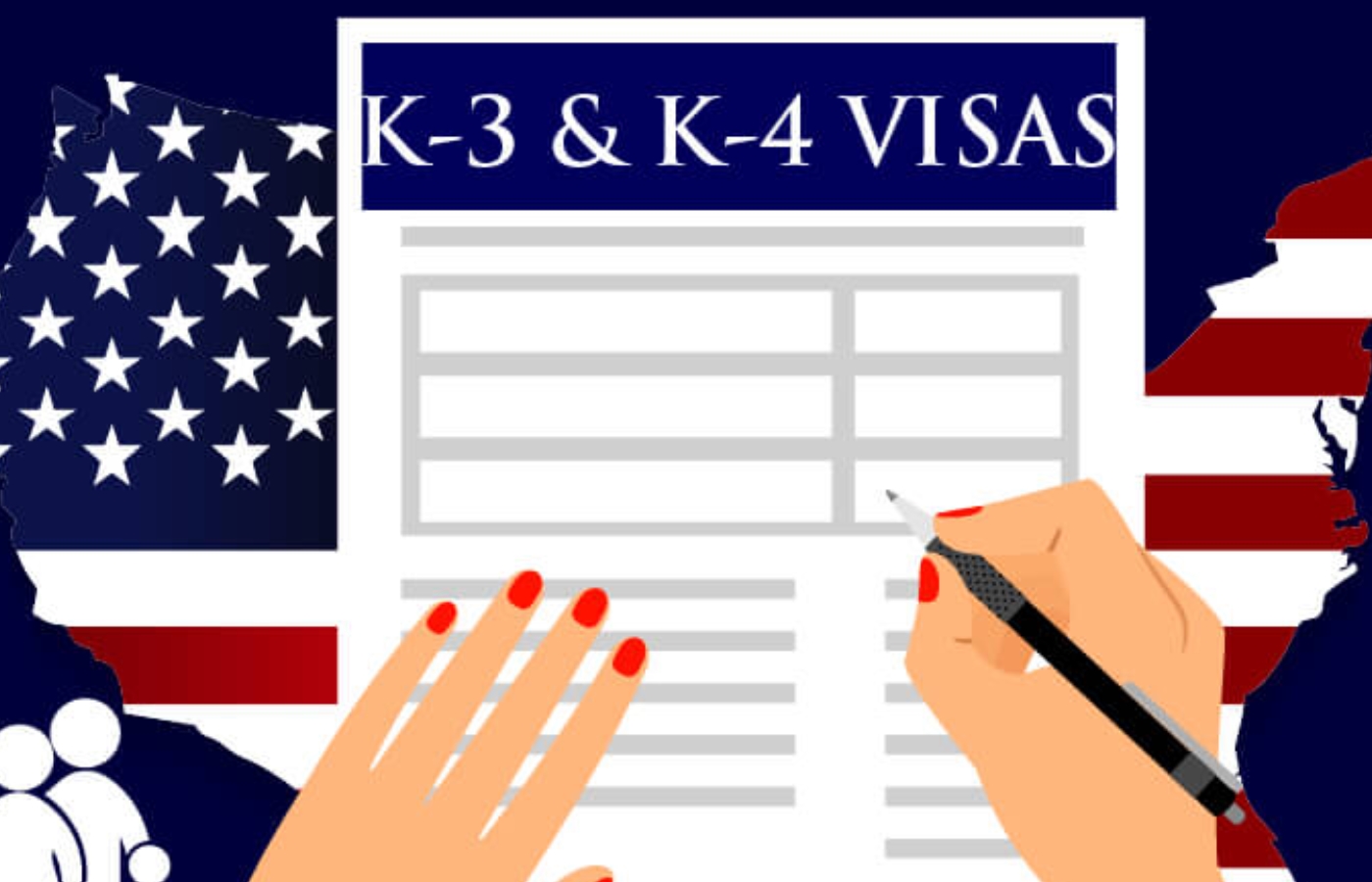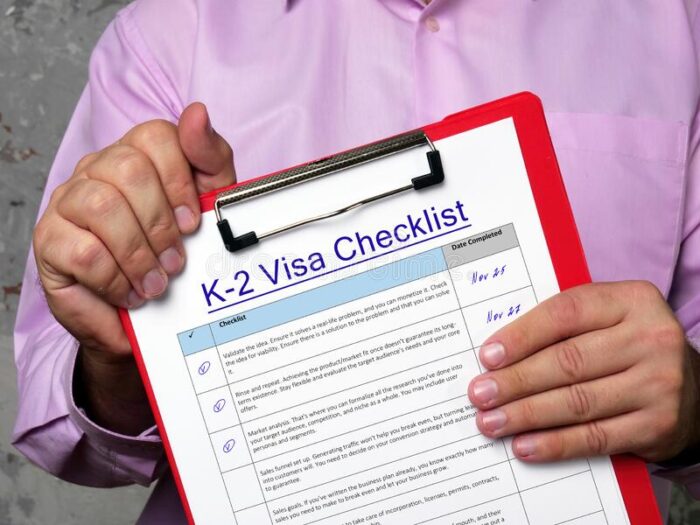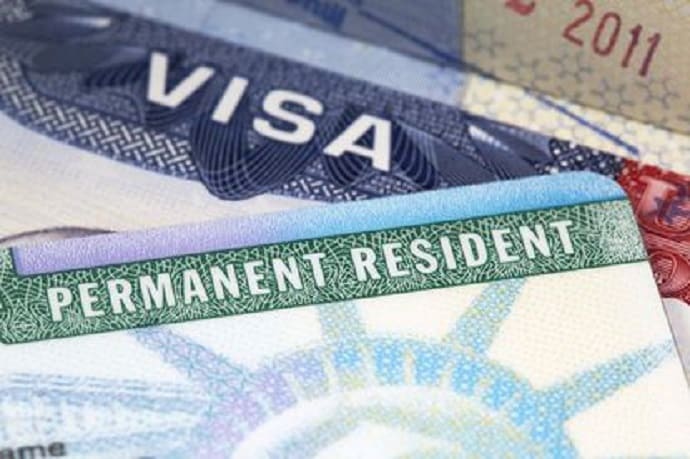
Most people are familiar with K-1 visas thanks to the reality TV show 90 Day Fiancé. Some may have learned of the K-2 visa using that same source; the two visas go hand-in-hand. But far fewer people realize that the K series continues into K-3 and K-4. What are these visas, and how do they compare to the K-1 and K-2? This article will break them down.
The Basics
It is important to start with K-1 to illustrate the differences between the relatively obscure K-2 and the even more obscure K-3 visa. A K-1 visa, or fiancé visa, allows a fiancé(e) 90 days to marry their American spouse. A K-2 applies to the children of someone filling out a K-1.
A K-3 is for married couples who live in different parts of the world. This visa takes advantage of family immigration laws to give non-native spouses more time to become permanent residents. It’s also rare for several reasons that will come up later.
The K-2 and K-3 visas are only comparable as marriage-related pieces of immigration legislation. The better point of comparison is the K-1 and K-3—two people who are not married versus two people who are. But much of the legislation and paperwork between K-1 and K-2 is very similar, if not identical, so there are still valid points of comparison. Most of the points about K-2 VS K-3 also apply to K-1 VS K-3.
Due to the requirements of both visas, someone cannot be eligible for a K-2 and a K-3 at the same time. If the decision comes down to coming over on your K-2 or getting married outside of the U.S. to get a K-3, this comparison may still help you.

K-2 applies to unmarried children; K-3 applies to married couples.
The biggest difference between the K-2 and K-3 is that the K-2 is restricted to unmarried children under 21, usually as part of a K-1 visa. The K-3, on the other hand, is limited to married couples. It is not possible to qualify for both visas at the same time.
Here are the rare circumstances that would make that possible:
- A child with a K-2 visa wants to get married in another country.
- A child with a K-2 visa is about to “age out” of that visa and wants another option to get into the U.S.
- The K-1 that the K-2 is attached to is about to expire, and the K-3 is another option for the person with the K-1.
A situation like this would warrant a visa lawyer’s advice!
K-2 has a 90-day limit; K-3 has a 2-year limit.
Both K-1 and K-2 have 90-day limits for the immigrant K-1 to marry. The limit to apply for permanent residency is longer with a K-3 visa. It is also generally easier to gain permanent residency with a K-3.

K-2 uses Form I-129F; K-3 uses Form I-130F
These two visas use slightly different immigration forms. The partner who is a U.S. citizen must fill out the proper form in either case. There are also slightly different forms to extend one’s stay in the U.S. If you want to make sure you are filling out the correct form, ask an immigration lawyer for clarification.
K-4?
A K-4 visa is a K-3’s version of a K-2. It is a partner visa that applies to the children of the people involved in a K-3. The qualifications are also similar: the children must be under 21, unmarried, and legally belong to the couple. Many of the points about K-3s will thus apply to K-4 visas as well.
A key difference between K-2 and K-4 visa holders is that K-2 visa holders can modify their status without filling out Form I-130. K-4 children, however, must fill out that form to change their status. K-4 visas are also cheaper than K-2 visas.

K-3 VS Green Card (et al.)
Part of the reason K-3 visas get very little press is because there are not many advantages over getting a green card. All K-visas require more paperwork to legitimize residency within the United States, usually with a green card.
There are also substantially fewer uses for a K-3 than for a green card. A K-3 is most useful for couples who are legally married outside of the U.S. That marriage must be recognized by their country of origin before being eligible for a K-3. This nuance may dent the dreams of same-sex couples who wish to use a K-3 to marry in the United States.
On that note, however, some married couples do not bother with the K-3 at all. Because the processing times are similar, many skip the K-3 and apply for a green card instead. But since there are some instances where the K-3 is the better option, and there are many more types of visas for married couples, it is wise to ask an immigration lawyer before applying for any visa.
Quick Comparisons
Here are a few other points of comparison that were too simple to warrant headers:
- K-3 visas are generally cheaper than K-1 and K-2 visas.
- K-3 holders get a green card more quickly than K-1/K-2 holders and have more status adjustment options overall.
- K-3 is good for multiple entries into the United States; K-1 and K-2 are one-time passes.
- K-1 visas have a shorter wait time than K-3 visas (seven months versus ten to thirteen months).
- The K-1 is usually ideal for people wishing to marry in the United States; the K-3 is better for people who marry in another country and wish to come to the U.S.

Conclusion
Immigration law can be confusing, and the myriad of K-visas is a decent example. If this seems like a lot, it is; that’s why immigration lawyers are trained to help people like you navigate a sea of documents. The K-2 and K-3 visas are nothing alike the moment you dip beneath the surface, and they only get more different from there. Contact an immigration lawyer today for a consultation.
















